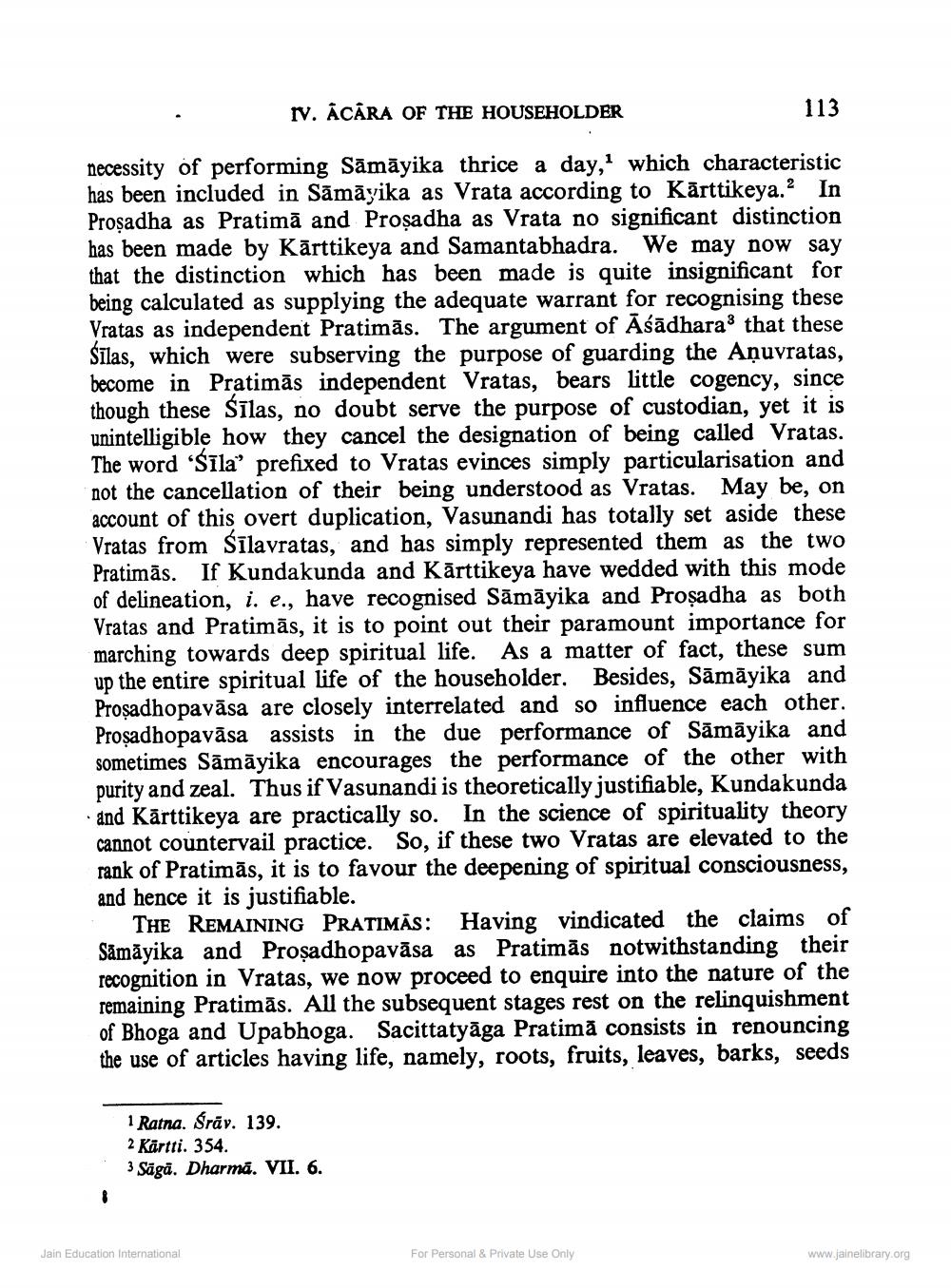________________
IV. ACARA OF THE HOUSEHOLDER
113
necessity of performing Sāmāyika thrice a day, which characteristic has been included in Sāmāyika as Vrata according to Kārttikeya. In Prosadha as Pratimā and Prosadha as Vrata no significant distinction has been made by Kārttikeya and Samantabhadra. We may now say that the distinction which has been made is quite insignificant for being calculated as supplying the adequate warrant for recognising these Vratas as independent Pratimās. The argument of Asādhara that these Sīlas, which were subserving the purpose of guarding the Anuvratas, become in Pratimās independent Vratas, bears little cogency, since though these Sīlas, no doubt serve the purpose of custodian, yet it is unintelligible how they cancel the designation of being called Vratas. The word 'Sīla' prefixed to Vratas evinces simply particularisation and not the cancellation of their being understood as Vratas. May be, on account of this overt duplication, Vasunandi has totally set aside these Vratas from Sīlavratas, and has simply represented them as the two Pratimās. If Kundakunda and Kārttikeya have wedded with this mode of delineation, i. e., have recognised Sāmāyika and Proşadha as both Vratas and Pratimās, it is to point out their paramount importance for marching towards deep spiritual life. As a matter of fact, these sum up the entire spiritual life of the householder. Besides, Sāmāyika and Proşadhopavāsa are closely interrelated and so influence each other. Prosadhopavāsa assists in the due performance of Sāmāyika and sometimes Sāmāyika encourages the performance of the other with purity and zeal. Thus if Vasunandi is theoretically justifiable, Kundakunda and Kārttikeya are practically so. In the science of spirituality theory cannot countervail practice. So, if these two Vratas are elevated to the rank of Pratimās, it is to favour the deepening of spiritual consciousness, and hence it is justifiable.
THE REMAINING PRATIMĀS: Having vindicated the claims of Sāmāyika and Prosadhopavāsa as Pratimās notwithstandi recognition in Vratas, we now proceed to enquire into the nature of the remaining Pratimās. All the subsequent stages rest on the relinquishment of Bhoga and Upabhoga. Sacittatyāga Pratimă consists in renouncing the use of articles having life, namely, roots, fruits, leaves, barks, seeds
1 Ratna. Srāv. 139. 2 Kärtti. 354. 3 Säga. Dharma. VII. 6.
Jain Education International
For Personal & Private Use Only
www.jainelibrary.org




